As summer temperatures climb across the U.S., so does the strain on our power grid. Millions rely on air conditioning, refrigeration, and medical devices to stay safe during extreme heat. But what happens if the grid can’t keep up? According to NERC (North American Electric Reliability Corporation), more states than ever face a real risk of blackouts during summer 2025. While we all hope for a smooth summer, the reality is that our electrical infrastructure is aging and more vulnerable to extreme weather than many people realize. For those of you who like to stay ahead of the curve – whether you’re a full-fledged prepper or just someone who values self-reliance – understanding these risks is the first step to staying safe and comfortable if the power goes out.
What is NERC And How Trustworthy are They?
NERC is a nonprofit group responsible for keeping the bulk power grid across North America running smoothly. At least in theory. Like any institution tied to government oversight, NERC isn’t perfect. So, when you ask, “Should I trust NERC?” the only honest answer is: it depends.
That said, to give credit where it’s due, they’ve managed to sound the alarm on big problems before they hit. Over the years, they’ve pointed out vulnerabilities that ended up leading to major blackouts. One clear example: back in February 2021, Texas was hammered by a brutal winter storm that left millions freezing in the dark. NERC had actually flagged this risk in previous reliability reports, warning about cold-weather weaknesses in the grid.
So, while they have their flaws and you should always take any official report with a grain of salt, it’s still worth paying attention when they tell you the grid might not hold up. Because when they do get it right, it’s usually a sign you should start double-checking your own preps.
What Does NERC’s 2025 Summer Reliability Assessment Say?
While the U.S. grid has faced summer challenges before, 2025 stands out for several reasons. According to the NERC’s 2025 Summer Reliability Assessment, the nation is heading into the hottest months with a unique combination of stressors.
Electricity demand has climbed sharply. NERC projects a 10 GW (gigawatts) increase in peak demand compared to last summer. That’s more than double the increase seen in 2024. This surge is fueled by growing data center activity (especially in states like Texas and Illinois), electrification trends (more electric vehicles, more electric heating and cooling), and industrial expansion.
Related: How To Choose A Propane Generator For House Use
At the same time, many older, dispatchable power plants, especially coal and natural gas, have been retired or placed on standby. Just this year, over 7.4 GW of reliable generation capacity has been retired or sidelined, creating tighter supply margins across multiple regions.
Adding to the strain is a heavier reliance on renewable energy sources, such as wind and solar. While wind and solar are essential for a cleaner future, they depend heavily on weather. During heatwaves, when winds calm and the sun sets just as air conditioning demand peaks, renewable output can drop off, leaving the grid scrambling...
Finally, aging infrastructure and global supply chain constraints have made it difficult to replace or repair critical equipment quickly. Distribution transformers, for example, are in short supply nationwide, and labor shortages persist in many utility service areas.
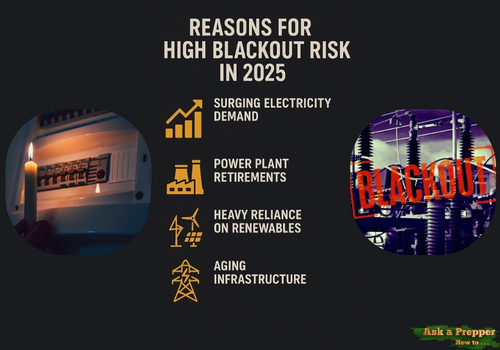
In short, while the grid is designed to handle expected peaks, it has less margin to absorb surprises. For those living in higher-risk states, this summer may bring more than just higher electric bills. It could mean real interruptions to daily life if the grid falters.
States Most at Risk of Blackouts in 2025
Based on the latest summer reliability report from NERC and regional grid operators, about 20 states across the U.S. are facing the highest risk of power shortages and rolling blackouts this summer. If you live in one of these states, it’s time to take a hard look at your backup plans, before the lights go out.
Most of these states fall under the Midcontinent Independent System Operator (MISO), the Southwest Power Pool (SPP), and large parts of Texas covered by ERCOT.
Here’s the list of states most at risk:
- Arkansas
- Illinois
- Indiana
- Iowa
- Kentucky
- Louisiana
- Michigan
- Minnesota
- Mississippi
- Missouri
- Montana
- North Dakota
- South Dakota
- Wisconsin
- Texas
- Kansas
- Nebraska
- New Mexico
- Oklahoma
- Wyoming
What You Need to Know
In the Midwest, states like Illinois, Indiana, and Minnesota are in the danger zone thanks to a fragile energy mix. Many coal and natural gas plants have been retired, leaving these areas heavily reliant on wind and solar. But when the wind stops blowing and the sun hides, the grid struggles.
The Southwest Power Pool states, including Kansas, Nebraska, and Oklahoma, aren’t in much better shape. These regions face soaring summer demand paired with unpredictable wind generation. When a heat wave hits and turbines sit idle, entire communities can go dark in hours.
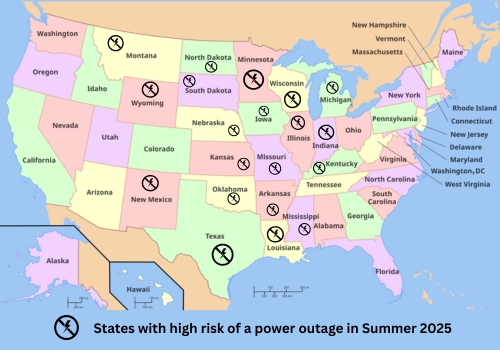
A Warning for Preppers Living in Other States
The “20 states at risk” figure isn’t from a single official list. It’s a combined snapshot from two major regional grids: MISO and SPP. NERC doesn’t spell out exactly 20 states on a red flag list. This combined number helps us see where the most strain is, but it’s not a perfect count.
 Why does this matter? Because the grid is a complex web, and risks don’t respect state lines perfectly. Some states show up on one list but not the other. By combining them, we get a clearer picture. But it also means the number “20” is more of a practical summary than a strict official count.
Why does this matter? Because the grid is a complex web, and risks don’t respect state lines perfectly. Some states show up on one list but not the other. By combining them, we get a clearer picture. But it also means the number “20” is more of a practical summary than a strict official count.
Therefore, even if you don’t see your state on this high-risk list, don’t let your guard down. All it takes is one intense heat wave, flash floods (see Texas) or an unexpected plant failure to send any grid spiraling. Just because your area isn’t marked bright red on a map today doesn’t mean you’re safe tomorrow.
This is why so many experienced preppers insist on staying ahead of the curve. When the grid buckles, it’s not just about comfort. It’s about keeping your family safe, your food from spoiling, and your home secure when everyone else is panicking.
Recent Outages Confirm the Threat of Blackouts 2025
We’ve already seen plenty of blackouts hit in summer 2025, proving just how shaky and overworked our power grid really is. On June 18, severe storms and tornadoes ripped through Missouri, Illinois, Indiana, and Ohio, leaving nearly 1.2 million people powerless. Jacksonville, Illinois, took a hard blow. Over 11,000 folks were left in the dark overnight, with no clue when the lights would come back.
And then there’s Texas – a prepper’s wake-up call. The grid, run by ERCOT, has been a mess for years, and 2025’s proving it again. February’s cold snap left thousands in the dark, but July’s floods were a gut punch. On July 4, Central Texas got slammed. Kerr County alone saw over 2,700 homes lose power when Tropical Storm Barry’s 5–11 inches of rain tore through, snapping power lines and flooding roads. Crews couldn’t even reach some spots, leaving folks without electricity for days in the heat.
Also, as of July 10, outages are still ongoing in places like North Carolina (more than 10,000 customers affected), Virginia (about 10,000), California (6,800), Pennsylvania (5,700), and Ohio (5,200). These numbers can shift up or down, depending on how quickly problems get fixed and whether new grid failures pop up.
All of these aren’t just freak incidents. They’re loud, flashing warnings that our aging grid is buckling under the weight of extreme weather and skyrocketing demand. If you’re paying attention, you know these aren’t problems you can ignore and hope will fix themselves. You either prepare now, or risk being left in the dark when it matters most.
What Can You Do to Prepare?
When it comes to blackouts, waiting until the lights go out is the worst possible plan. Real preparation means acting early, so you aren’t scrambling at the last second. Also, it’s important to keep in mind that you don’t know for how long the power will be out. Best case: hours. Worst case: weeks. Here’s a closer look at how you can stay ahead of the next grid failure.
Stay Informed
Knowledge is your first line of defense. Sign up for local power outage alerts from your utility company or local emergency management agency. Check updates from your regional grid operator regularly. You can also monitor real-time outage maps to see problems developing in your area before they hit your neighborhood. Staying aware gives you valuable time to charge devices, fill water containers, and get last-minute supplies before everyone rushes to the store.
Stock Up on Basic Supplies
When the power goes out, the last place you want to be is stuck in a crowded store fighting over the last gallon of water. Keep at least a two-week supply of non-perishable and long-lasting food, medications, and hygiene items on hand. Think through what you’d need if you couldn’t leave home for a while: candles or lanterns, manual can openers, extra fuel, and even entertainment like books or cards to keep morale up.
The Special Case of Water
There’s also the special case of water. In the U.S., the public water supply is largely tied to the power grid. That means in many areas, if the power goes down, so does your access to water, or at the very least, your access to (relative) safe, filtered water.
Picture this: a brutal heatwave, no way to cool your home, and no running water… God forbid.
So, what can you do? The answer is simple: build up a water stockpile or, even better, break your dependence on the grid altogether. Here are two solid options I highly recommend:
How does generating 50 gallons of clean water per day completely off-grid sound? If it sounds good to you, check out this backpack-sized water generator. It’s used by military forces around the world, even in harsh desert conditions. It’s affordable, easy to set up, and incredibly efficient. Oh, and it doesn’t need anything except… thin air!
If you’re looking for long-term water independence, you should also take a serious look at The Water Freedom System. This system is also trusted by militaries in the U.S., Israel, India, and the UK. It’s definitely worth a shot. Check it out here.
Reduce Your Energy Use
You can help prevent a blackout, and protect your own home, by lowering your usage during peak hours (usually in the afternoon and early evening). Run big appliances like dishwashers and washing machines overnight, set your AC a few degrees higher, and turn off lights or electronics you don’t need. Not only does this help the grid, but it may also save you money on your bill.
Another smart approach is to reduce your dependence on the grid as much as possible. And you can do this in more ways than just buying a backup generator. For example, you can take a page out of the Amish playbook. Instead of relying on electric appliances, you can swap out your most essential tools and household systems for air-powered tools that keep you self-sufficient even when the grid is down.
Sure, this solution might sound a bit complex at first, but it’s surprisingly cheap and easy to put into practice. Even if you’re not ready to completely give up modern comforts, it’s worth learning these methods so you’re prepared if a major power crisis hits.
Here are a few examples you might want to consider:
- Amish fridge that doesn’t need electricity
- DIY Off-Grid Water Filter
- Amish AC unit that cools your house without electricity
Invest in Backup Power
A reliable backup power source can be a true lifesaver. Depending on your budget and needs, this could be a portable generator, a whole-house standby generator, or even solar panels with battery storage. At the very least, consider smaller backup batteries for essential electronics and medical devices. Make sure to test your equipment ahead of time. A generator that won’t start during an emergency is about as useful as a rock.
Related: Emergency Power Supply: Backup When the Grid Goes Dark
Protect Your Electronics
Power outages often come with voltage spikes when the grid flickers back on. These surges can fry your electronics in an instant. Use surge protectors for important appliances and devices, and consider uninterruptible power supplies (UPS) for computers and sensitive medical equipment. It’s a relatively inexpensive way to save thousands of dollars and avoid losing valuable data or equipment.
Final Thoughts
The warnings about Blackouts 2025 across these states are real and backed by data. The severity depends on weather and grid stress, but recent outages prove these aren’t just hypothetical scenarios.
This isn’t about panic, but about practical preparedness. Taking steps now to protect your family and your home means when the next heatwave or storm hits, you won’t be caught off guard. After all, prepping is all about peace of mind.
The floods of December 2015 pushed this 45-year-old professor from Memphis, Tennessee to develop an Easy DIY Power Plan that helps you cut your bills and become far less dependent on the grid. Have a look at it!
You may also like:
25+ Ways To Keep Food Cold Without Electricity
This Homemade Device Can Power Up Your Entire House 7 Days in a Row (Video)
How to Make Your Own Semi-Automatic Off the Grid Washing Machine (No Electricity)
I Lived Without Electricity For A Week. Here’s What Happened

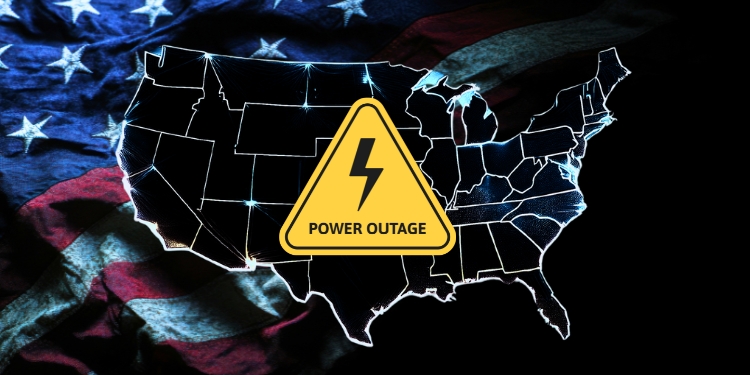
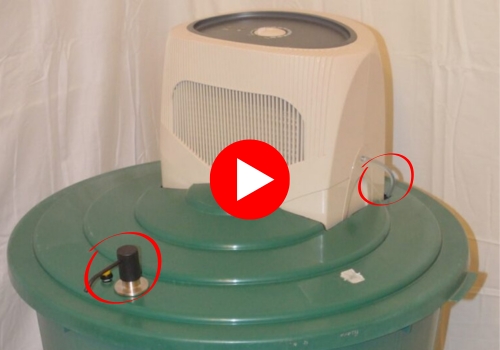







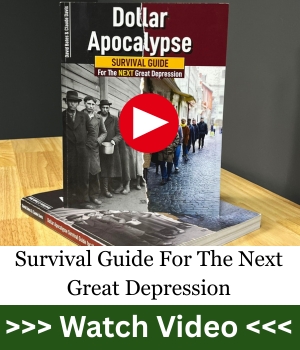
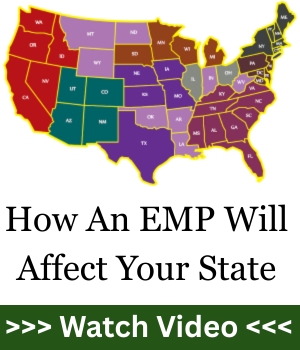



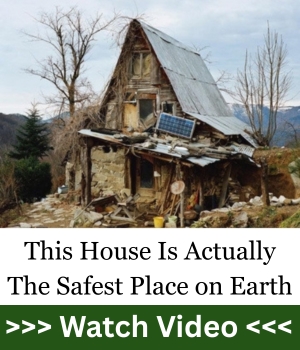

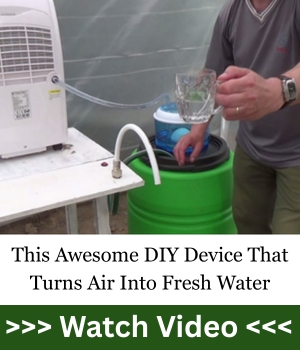





I do not understand why So. and No. Dakota, Wyoming, Montana, Iowa they all have the lease amount of people, plus why Ca., and Texas will not go out??
Great question! It can definitely seem confusing at first. Let’s break it down a bit.
States like North Dakota, South Dakota, Wyoming, Montana, and Iowa do have smaller populations, but they’re still at high risk because of how their power grids are set up. Many of these states rely heavily on wind power and have fewer backup power plants like coal or gas.
When the wind isn’t blowing (which often happens during summer heat waves), they can’t make up the difference easily, no matter how few people live there.
Texas is at high risk too, as pointed in the article and shown by current events, unfortunately.
As per California, of course it does face serious blackout threats, but in this specific 2025 NERC assessment, the immediate summer risk was higher in Midwest and Central states. California has big vulnerabilities too (like wildfires, aging infrastructure), and rolling blackouts can still happen, but their summer grid balance this year looks a bit more stable so far.
In short, risk is about how fragile the grid is, how dependent they are on certain energy sources, and whether they have enough backup when demand spikes.
Thanks for bringing this up! It’s an important point for everyone to understand! Stay safe!
You know what is crazy…this year in So. Dakota we hardly have ANY wind and normally the wind blows 24-7 at 20 to 30 mph! So far this year even this last winter there has been very little wind! Really it has been nice! But now that it has been brought up about the wind mills I think this is all man made!! So Dakota is one of the windiest state because it is very flat! I am from Ca. and we have many black outs!! And are they talking about the whole state or just parts of it?
caleb,
BS on what planet do you live on. as i post this cali has 11.5K customers out now. and thats on any given day
Why do you think they are not included ? It’s all by design, it’s all planned that way.
Solar & wind are just frauds at this point. Go on YouTube and lookup it up. Solar is not producing what it should & neither is wind centralized the worst and home units not much better due to a lack of testing & factual engineering reports, if the report is not notarized with penalties for making false claims it is not worth bothering with, and it’s the reason you can not find any wind or solar company that offers it.
I believe it and agree with you!
Anon,
There is a big difference in solar power installations for homes. I researched this heavily. You MUST get NABSEC certified installers. The other companies will claim that they are NABSEC. Ignore them and go straight for the source. Nabsec will tell you who is certified in your area. I know people that did not do this and they were totally screwed over and the so don’t make that mistake I have a ‘whole house” solar system with batteries. Other people around me were without power for 3 days and we were fine. This can be an expensive way to go (we had to finance) but it does pay for itself in the long run. We live in the south and my July electric bill was $12.07. If you do it right you are self reliant and it is not a fraud. Good luck and try to take the time to research it. It could really pay off.
Is there anywhere to buy one of these water freedom systems?
I did before and returned it as it consisted of converting a dehumidifier to produce water by adding filters etc. The amount claimed is far off the actual amount you can expect.You can look up the mfg. Claims of the amount of water it removes and go by it & it still requires electricity look up the amount it requires, and the figures don’t match up to the claims made. The commercial rooftop systems are far worse they are just a waste of money to me, again look it up on YouTube before committing to anything also look at state complaints about these companies and see what has been filed against them, you will see the difference between the claims and the reality.
Thank you. I suspected it was nothing more than a dehumidifier. I have one. It would be of little use in a grid down situation. I’ll continue to rely on our rain barells and good filters. We are accustomed to water shortages having lived on a sailboat. 3 gallons a day. Caught rain in a tarp on the bow. It was fine!
At home we have been through 25 hurricanes (3 were cat 5). When water is down, no TP in the toilet. Flush only for #2 into the septic tank. TP goes into the composter. It isn’t enough humiture to worry about. We lived 6-9 months/year for 22 years off the grid. With planning it’s just fine. Again, thanks for the information
The Grid is not the actual physical infrastructure, power plants, transmission lines, etc,the Grid is actually the complex highly computerized control system that manages the flow of power from thousands of power sources to millions of power consumers. Supply and demand are constantly shifting and if one part of the complex infrastructure gets too much or too little electricity physical damage will result. The great Texas Winter Power Failure was not a grid problem but an unexpected and complex surge in demand along with major unexpected loss of supply. The system became so chaotic the grid operator, ERCOT, had to shut everything down in a controlled manner or the entire computerized control system would have destroyed itself. No one knows how long it takes to rebuild and restart after a control grid collapse, months at least. ERCOT was within minutes of total collapse when they shut it down. This is a terrifying SHTF scenario that goes far beyond the inconvenience of localized storm damage.
Texas is finally spending the money for more stability by building some big new gas fired power plants and building more battery storage than anyone but China to take advantage of intermittent wind and solar. Not unusual at night in Texas for up to 30% of electricity to come from batteries.
Texas has spent gobs of money and has nothing for it but words from corporate. They are supposed to keep trees out of powerlines as routine maintenance. They don’t. They are supposed to replace problem area wooden poles with steel…they haven’t. They were supposed build additional substations…they haven’t but the stock holders and corporate all get their yearly dividends and bonuses. Come to find out these corporate dirt bags are located in New Mexico and don’t have skin in the game. Greed will cause the grid collapse before an enemy will.
Counties in rural Texas are governed by The Commissioners Court. Some are well run, some poorly run, and some like the one I live in try real hard to give us maximum freedom by doing nothing. I like the do nothing approach. In Texas their are power generators and power providers. The big generating plants are owned by all kinds of mega corporations. The power providers do nothing more than run a power line to your house and send you a bill, and those companies are a nest of snakes. Greed looks to collapse everything one of these days, not just the grid. Happily my power provider is a licensed rural co-op required by law to spend all their revenue on improving their infrastructure, anything left over goes to the customer in a check at the end of the year. Our little redneck enclave has fancier digital electric service than Brad Pitt and all his big time neighbors out there in Califa! And cheap.
I don’t know where you live in Texas, but that is far from true here in East Texas. We have very high steel pols, trees are trimmed on a regular basis, and some completely removed as were my two oaks in my front yard. Many tress here are at least 100 ft. tall, so our steel poles are massive.
You can read a lot of NERC event reports here: https://www.nerc.com/pa/rrm/ea/Pages/Major-Event-Reports.aspx
This one notes the same troubles that Texas went thru in 2021, but 10 years earlier (they didn’t listen): https://www.nerc.com/pa/rrm/ea/Documents/SW_Cold_Weather_Event_Final.pdf
Here’s 10 years later: https://www.nerc.com/pa/rrm/ea/Documents/February_2021_Cold_Weather_Report.pdf
Real Question is WHY? and who is causing this
Look at the Map , Notice all Republican areas
Who wrote the Map , where do you get this assumption or info from .
Detail what facts used to come up with this assumption .
Dont just accept the Fear mongering .
If anything I think that it would be in Demo States which have so many leftist and woke buddies , they would cause this.
Then I dont think this will be limited to central states
because the Ties between who generates , how they generate , and where the feed to
cannot be summed up in little statement s or papers of assumption .
Dont Fear , Prepare
if your fully prepared , then what ever happens should not shock you
When the Elites have so much that they have to screw up the rest of us to get more , this is what you get FUBAR Elietis in control
Hi Christopher!
Thanks for your comment! Valid concerns. To clarify: the blackout risk map is based on official data from NERC’s 2025 Summer Reliability Assessment, not politics. The 20 states listed are mostly in regions managed by MISO and SPP, which face high demand, fewer dispatchable power plants, and increased reliance on weather-dependent renewables.
This is about infrastructure strain during extreme weather and rising energy use. The grid spans multiple states and operates beyond political lines.
Recent outages in states like Texas, Illinois, and Ohio are clear signs the system is under pressure. This article isn’t fearmongering, but a heads-up to prepare, wherever you live.
I agree with you that there is no reason to fear anything. This is meant to encourage preparedness. Whether you trust the system or not, it’s smart to have a plan before things go dark.
Have a blessed day,
Caleb
So far this year I think all our power outages here in Texas were caused by storm damage, not under production. Some problems cannot be prepared for. See my comment above.
I thought of that as well! Like I said I think it is man made! The illuminati controls just about everything now!!!
Generators require some kind of fuel.
Try storing a month;s supply of fuel safely.
Consider the cost of the fuel itself too.
If power is out, even natural gas will stop flowing soon after and they need equipment to provide the gas.
Propane is OK if you have a 1,000 gal tank to draw from but when that runs out, what then?
And of course if you are the only one with lights and power, what do you think the neighbors (AND THIEVES) will do?
Solar is OK for the most part if your system is designed for LONG EXTENDED power outages. You would need triple the solar panels and double the batteries that the calculator says you need due to various losses and such.
You can store a little food in a ZEER Pot depending…
Charcoal grill or Firebox stove can cook and save energy.
WATER is going to be your biggest challenge.
1 gal per person per day x # of people x 30 days or more = a WHOLE LOT OF WATER.
And water needs to be treated and sanitized too.
Most all that takes electricity to do (but not always).
Save energy by closing heavy drapes on the windows every morning and open them at night.
Windows too is nighttime lows are at least 5 deg F lower than the inside of your house.
That certainly will save some power and money.
Keep others out of your house – no visitors! Each adult emits 700 btu/hour in heat at rest.
Keeps kids from running in and out too.
Keep your vehicle fuel tank FULL, just in case.
An inverter can help in a pinch but most will not be able to power a refrigerator or microwave. And the vehicle battery cannot provide enough reserve.
Use the smallest LED bulbs you can get away with.
And the least number of them too.
Night lights use the least and can get you by.
Remember, you need shelter first, then WATER WATER WATER, then food, then other things.
Most of that is going to require a lot of money and even power to set up and even maintain.
Mine runs on natural gas. Company does a test run once a week to keep cylinders dry and find problems before the occur.
At 75, and living in the Arizona low desert area, an extended power loss would be a grave concern for me personally. During 8 months of a year, I would be fine, with my solar energy backup, and various prep precautions, but during the summer … at 118 degrees F … (yesterdays high) and hotter … I fear I won’t last too long. I mean I know a lot of tricks to try to keep cool in the hot summers, but they involve water, and a breeze … and both items are in short supply naturally in the low deserts … so if we were in Arizona to have extended blackouts in the summer (a reality even if this list doesn’t show it) … I probably won’t make it …
I’m 75. Hubz is 86. We live in the subtropics. We have one of those fans like the workmen use with their power tool batteries. Charges on the folding solar panel. As I write this it is midnight and about 82 outside with 90% humidity.. We have done ok after hurricanes – grid down- with that fan. You might want to have a spray bottle for body cooling. Not much water use that way.
Ours is a Ryobi, but all the companies have them. We have battery tools of that brand. Handy.
Hope this helps.
Wow, at 75, your foresight and prep for most of the year are seriously impressive! The summer heat sounds brutal, but your determination tells me one thing only: you’ve got this! Stay strong and God bless!
I remember when i was a kid ….on those extremely hot summer days…i could go down in the basement and it actually felt very cool…..in Wa. state.
Just don’t go in the attic…it felt very deadly….i think that’s why i like the idea of Earth Homes…one of the many benefits. Warm in winter …cool in summer
good catch! i wasn’t aware of this, thanks for the info. are they any solar solutions that can help during such crises?
Hi Dumont! Thanks for the nice words. Sure, you can find in the article links to solutions based on solar panels and more. Hope that helps! Stay safe!
Here in south Louisiana, trying to live without a/c running isn’t possible! We would have to be hospitalized!! Today was 95 degrees outside then an afternoon shower that caused the humidity level to rise exponentially!! Became 99 degrees fast!! My a/c thermostat is set on 79 degrees and runs longer in afternoon hours! The worst is this is a manufactured home! Can’t imagine trying to build a home at 74 years old! Do the best I can with what I have! Then let the Lord handle the rest!
I remember someone telling me the best or fastest way to start cooling down is to stick your wrists into a creek….true…false..i don’t know…but i have done that when i was working on logging roads .back in the day.
Those loggers liked filling up old clorox bottles with water to drink in the woods…but beware…maintenance liked putting other chemicals in them and not clearly labeling its contents. My Uncle nearly died of taking a big gulp thinking it was water…..long ways to the hospital…he lived but people say he was never the same.
I live in the Free-State of Florida (Not on the list).
We still have the chance of Power Outages due to our annual Hurricane Season. Like everywhere you can also get short-term outages when some idiot driver crashes into a telephone pole and knocks it down. Some states have a fast re-route/restore power plan other states don’t.
Final Thoughts:
The warnings about Blackouts 2025 across these states are real and backed by data. The severity depends on weather and grid stress, but recent outages prove these aren’t just hypothetical scenarios.
Okay, here we are over a month after the posting of this article – 19 August 2025.
No one blackout nor brownout has happened.
Increased possibilities of power outages is a real thing due to a combination of factors, including growing electricity demand, particularly from data centers and industrial facilities, and the retireement of power plants without adequate replacememtns.
Cutting back on usage is always a good pratice but most will not reduce enough that truely matterss to their own electic power bill. At least not until they can’t afford the power bill.
The areas identified in this article is an accurate look for the most part. Midwest and Southwest, face specific risks due to plant reetirememnts, extreme heat,and solar reliability concerns.
Preparatopn is Key. By 2030 this could be an issue but that gives the country 5 ish years to get more other power providers online: nucleaar, wind, solar and etc…